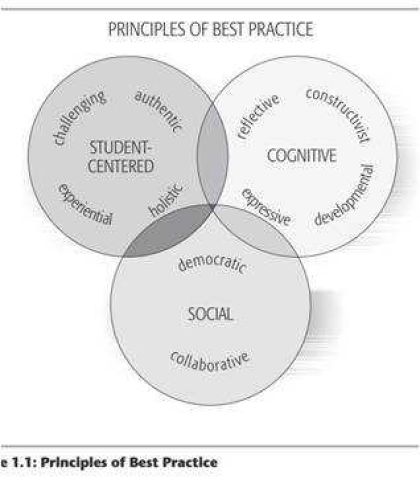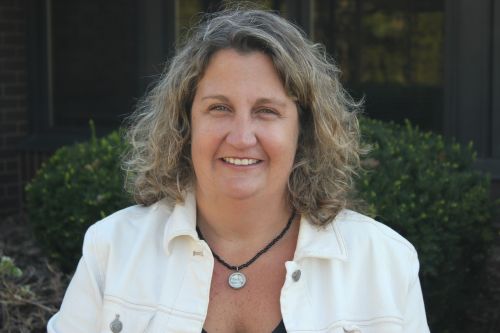Best Practice for Serving Advanced Middle School Students
As someone who is invested in online education and blended learning, my ears perk up whenever I hear about an online school or program for students, particularly one that’s geared toward middle school students. It seems that every year, there are more options to consider. I find myself asking and being asked by parents and colleagues:
“Is this course a good one for my middle school student?” “Would these offerings fit with our middle school philosophy?” “Is my academically talented student able to take a high school level course online?”
It is helpful for parents and schools to know what the best practice is for middle school online learning. Knowing “best practice” helps you find courses that meet your student’s needs. So, what is the best practice for middle school online courses? I think it helps to begin with an understanding of best practices in middle school education.
Blending Student-Centered, Cognitive and Social

Zemelman, Daniels, Hyde (2005) Best Practice: Today’s Standards for Teaching and Learning in America’s Schools. 3rd Edition. Portsmouth, Heinemann.
Authors Zemelman, Daniels, and Hyde summarize the principles of best practice for middle school instruction well in their book Best Practice: Today’s Standards for Teaching and Learning in America’s Schools. They highlight three main principles: student-centered, cognitive, and social.
Education needs to be student-centered, meaning it is centered around their needs and their interests (unlike many high school courses, which are content-centered). It also needs to be cognitive-based, meaning it is taught in chunks that middle school brains can handle, which allows them to be reflective and expressive with the content. And education needs to be social -- students need to be able to collaborate with others and have a voice in the educational decisions.
Consider Brain Development

Gogtay N, et al. Dynamic mapping of human cortical development during childhood through early adulthood. PNAS 2004;101(21): 8174 - 79, Fig. 3.
Another thing to remember as you look at options for middle school students is the recent research in brain development (there's a great blog post on that here). Research has confirmed what many middle school teachers have known for a long time: their age tells us they are in middle school, but they can act more like preschoolers!
Because of puberty, what has seemed like a normal growth pattern until now is suddenly disrupted. The hormones/chemicals that set puberty into motion create a flux in emotions. The limbic (emotional brain) is fully developed. Middle school students have all the emotions but the prefrontal cortex (the part that controls the emotions) is underdeveloped. So, using the car analogy, they have all the parts, and their accelerators are fully developed, but their brakes are not developed yet! This affects their cognitive learning, social functioning, and emotional stability. This means that items that may be appropriate for high school are not appropriate for middle school students. They are a special group!
So, how do these best practices come together when evaluating online courses for middle school students?
- Be sure that the courses are taught and developed by highly qualified teachers. It is important that the teachers are trained in working with middle school students and they are highly knowledgeable in their content area. They should also be trained in online instruction. It’s important to ask, “Is this a course for an advanced middle school student or a remediation course?’. Be certain the instructor is trained to work with academically talented learners.
- Make sure that the courses are teacher-directed. Teacher-directed means that the teacher is guiding the learning. He or she is directly involved in determining where the student is at with the material and helping him or her achieve the required course content. This is unlike a computer-directed course in which the computer is auto-scoring and opening/closing content.
- Pay attention to class size. A course in which the teacher has more than 20 students does not allow the teacher to focus on individual students. (For more research on online class sizes, read this U.S. News article.)
- Look into how often formative assessment occurs. Frequent formative assessment needs to take place. This means that the teacher is paying attention to where the student is at with the material, evaluating what the student is comprehending and learning, and adapting the curriculum to meet the student’s needs.
- Be aware of the creativity required for the course. The curriculum should allow the student to be creative, which builds the student’s capacity for problem-solving.
- Ask about the type of work required. The curriculum should include both independent work and group work. Middle school students and academically talented students need and want to work both collaboratively and independently.
- Inquire about the opportunities for community. Does the course provide opportunities for the students to communicate online (within a safe environment) beyond the curriculum? Middle school students are a social group and need time to socialize with their peers, even through the Internet. This can be particularly beneficial for students who are academically talented
You can learn more about this topic in the free archived webinar, “Challenging Students with Digital Learning: Best Practices for Academically Talented Middle School Students” with Becci Zwiers. This webinar was recorded last spring through Christian Schools International.

Becci Zwiers
Teacher Consultant
Becci served as a Teacher Consultant at All Belong.
